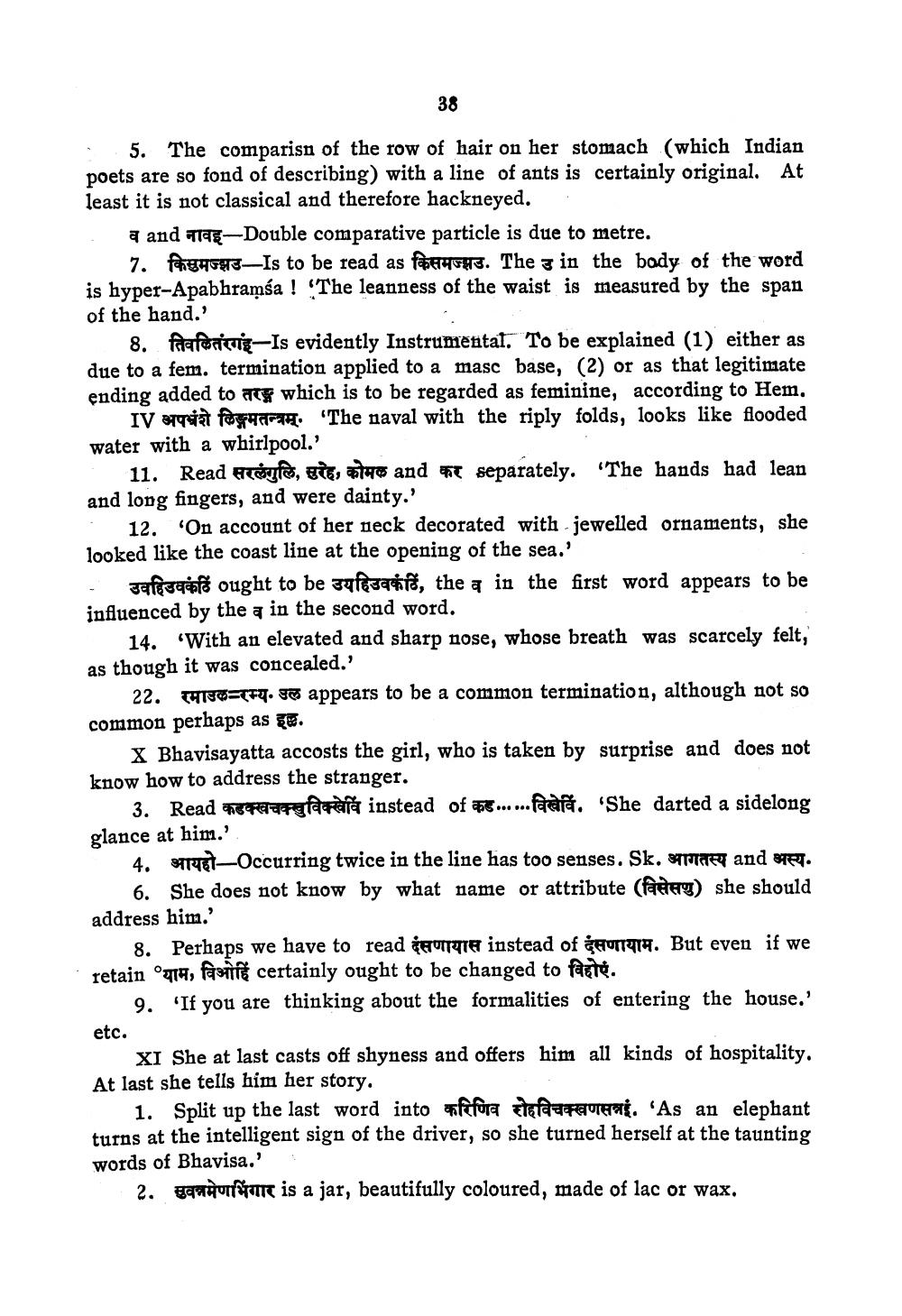________________
38
. 5. The comparisn of the row of hair on her stomach (which Indian poets are so fond of describing) with a line of ants is certainly original. At least it is not classical and therefore hackneyed.
a and Tae-Double comparative particle is due to metre.
7. किसुमज्झउ-Is to be read as किसमज्झउ. The s in the body of the word is hyper-Apabhramśa ! The leanness of the waist is measured by the span of the hand.'
8. fafortis-Is evidently Instrumental. To be explained (1) either as due to a fem. termination applied to a masc base, (2) or as that legitimate ending added to a which is to be regarded as feminine, according to Hem,
IV a fer . The naval with the riply folds, looks like flooded water with a whirlpool.'
11. Read Freesyfes, gle, 74% and met separately. The hands had lean and long fingers, and were dainty.'
12. "On account of her neck decorated with jewelled ornaments, she looked like the coast line at the opening of the sea.' - उवहिउवकठिं ought to be उयहिउवकठिं, the व in the first word appears to be influenced by the a in the second word.
14. "With an elevated and sharp nose, whose breath was scarcely felt, as though it was concealed.'
22. UTØTFT. 5o appears to be a common termination, although not so common perhaps as se.
X Bhavisayatta accosts the girl, who is taken by surprise and does not know how to address the stranger.
3. Read कडक्खचक्खुविक्खेविं instead of कड.....विखेविं. 'She darted a sidelong glance at him.'
4. आयहो-occurring twice in the line has too senses. Sk. आगतस्य and अस्य.
6. She does not know by what name or attribute (farareg) she should address him.'
8. Perhaps we have to read Frote instead of Gauth. But even if we - retain °याम, विओहिं certainly ought to be changed to विहोएं.
9. 'If you are thinking about the formalities of entering the house.' etc.
XI She at last casts off shyness and offers him all kinds of hospitality, At last she tells him her story.
1. Split up the last word into ffure Felapa T . 'As an elephant turns at the intelligent sign of the driver, so she turned herself at the taunting words of Bhavisa.'
2. H e is a jar, beautifully coloured, made of lac or wax,




